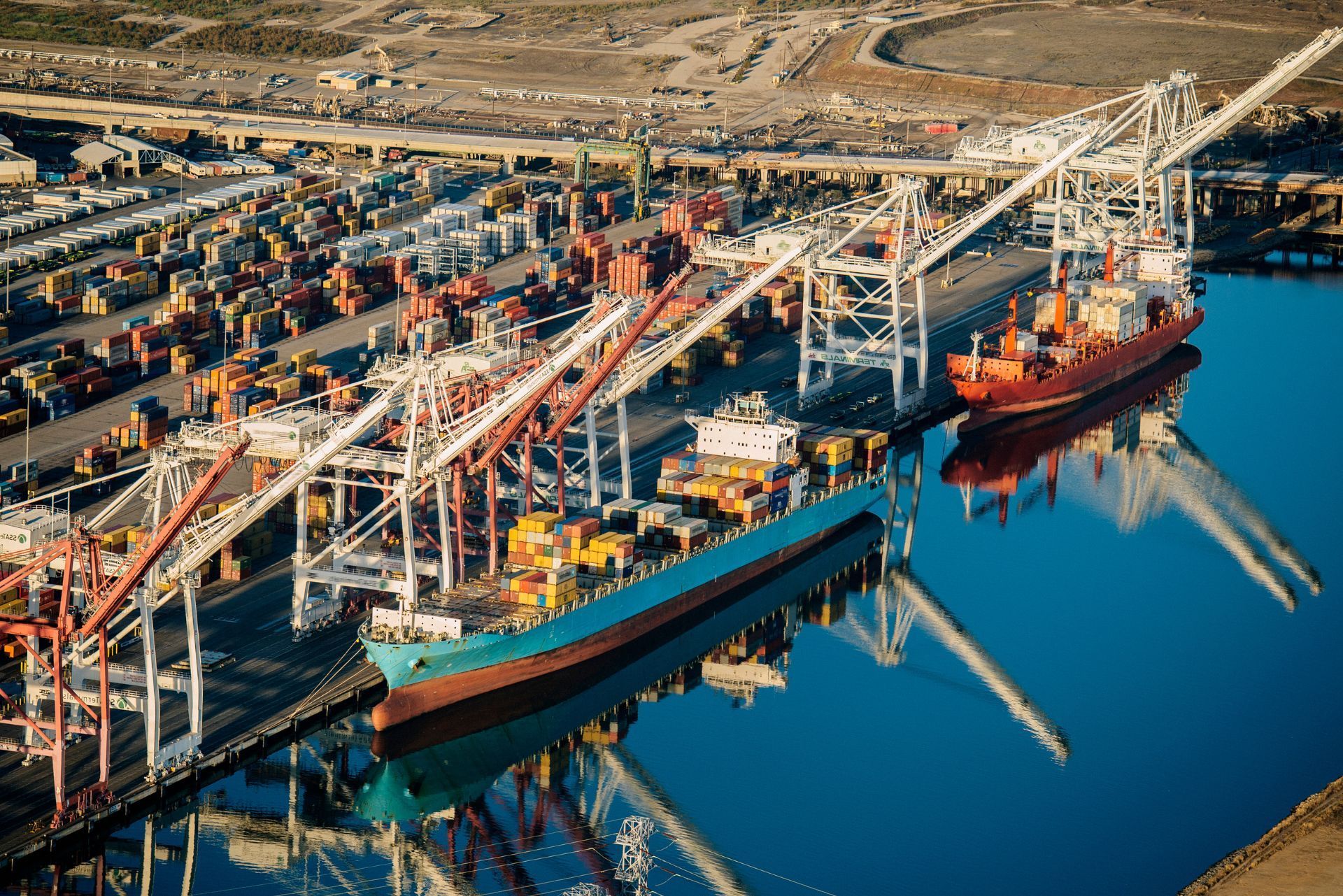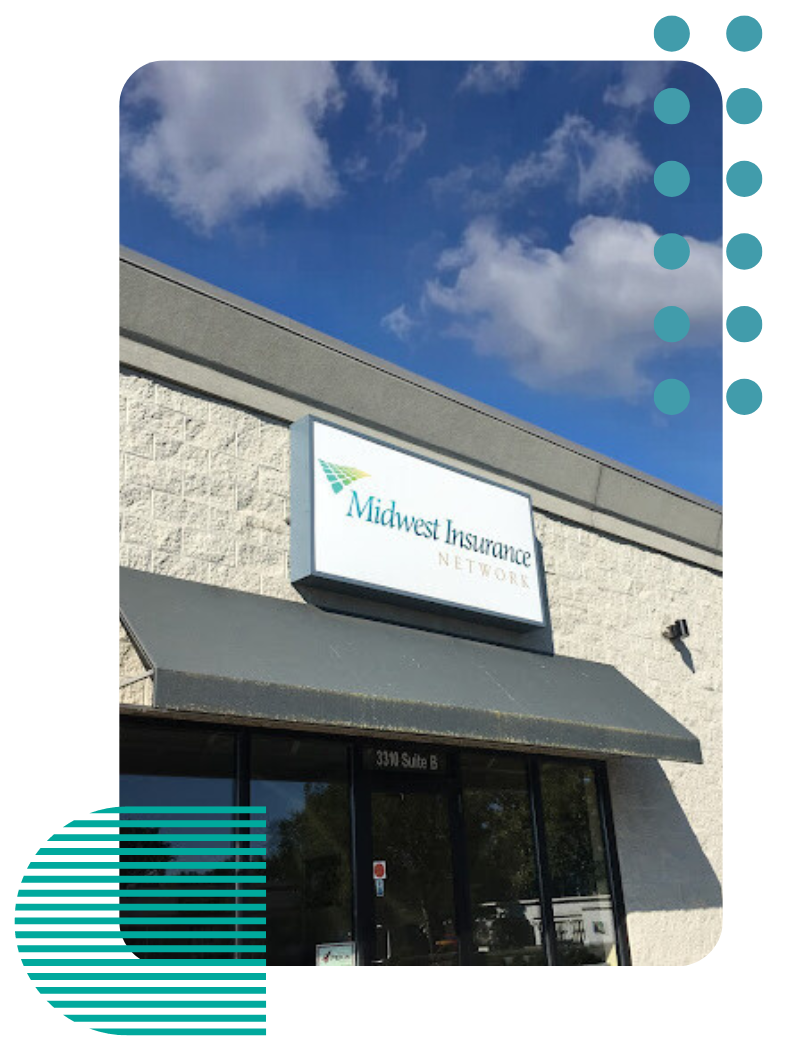Top 3 Recommended Policies
Index
What Is Inland Marine Insurance?
Why Ohio Businesses Need Inland Marine Insurance
What Does Ohio Inland Marine Insurance Cover?
How Inland Marine Insurance Differs From Other Insurance Types
Ohio Inland Marine Insurance Regulations and Requirements
How to Choose the Right Inland Marine Insurance in Ohio
Common Inland Marine Insurance Claims in Ohio
Tips for Ohio Businesses to Maximize Inland Marine Insurance Benefits
Contact Us
Phone
agency@midwest-insure.com
Location
Northwood, OH
3310 Woodville Road, Suite D
Northwood, OH 43619
Elmore, OH
361 Rice Street
Elmore, OH 43416
In the diverse and dynamic business environment of Ohio, protecting valuable equipment, goods, and property that move or are stored off-premises is crucial. Inland marine insurance is a specialized coverage designed to address these unique risks. Whether you’re a contractor, retailer, or logistics provider, understanding inland marine insurance can be the difference between financial security and unexpected loss.
This comprehensive guide explores everything you need to know about Ohio inland marine insurance, including what it covers, why it’s essential, how it differs from other insurance types, and tips for securing the right policy for your needs.
What Is Inland Marine Insurance?
Inland marine insurance is a type of property insurance that covers goods, equipment, and materials while they are in transit over land, or stored at a location other than the insured’s primary premises. Despite the name, it’s not limited to maritime activities but rather focuses on protecting movable or specialized property.
Originally, inland marine insurance evolved from ocean marine insurance, which covered cargo transported by sea. As commerce expanded inland, the need to insure goods transported by land routes, such as trucks and trains, led to the development of inland marine policies. This evolution reflects the changing landscape of trade and transportation, where the movement of goods has become increasingly complex and diverse.
Inland marine insurance plays a crucial role in various industries, from construction to technology. For instance, construction companies often rely on this type of insurance to protect heavy machinery and tools that are frequently moved between job sites. Similarly, artists and galleries utilize inland marine insurance to safeguard valuable artworks during exhibitions or while in transit to collectors. This insurance not only provides peace of mind but also ensures that businesses can recover financially from potential losses, allowing them to focus on their core operations without the looming threat of unexpected damages.
Key Characteristics of Inland Marine Insurance
Unlike standard commercial property insurance, which typically covers fixed property at a business location, inland marine insurance covers property that is mobile or in transit. Examples include construction equipment, fine art, medical instruments, and even data and communication equipment.
Inland marine insurance policies are often customized to fit the specific needs of the insured, making them highly flexible. This adaptability is particularly useful for Ohio businesses that deal with specialized equipment or operate across multiple locations. For example, a company that transports sensitive medical devices may require coverage that accounts for temperature fluctuations and potential damage during transit. Additionally, businesses that frequently ship goods to various locations can benefit from coverage that extends to different states or regions, ensuring comprehensive protection no matter where their assets are located.
The underwriting process for inland marine insurance can be intricate, as insurers assess the unique risks associated with each type of property. Factors such as the nature of the goods, the transportation methods used, and the distance traveled all play a significant role in determining premiums and coverage limits. This thorough evaluation helps ensure that businesses receive appropriate coverage tailored to their specific operational needs, ultimately contributing to the stability and success of their ventures.

Why Ohio Businesses Need Inland Marine Insurance
Ohio’s economy is diverse, with strong manufacturing, construction, retail, and transportation sectors. Many businesses rely on expensive equipment and inventory that frequently move between job sites, warehouses, or customer locations. Inland marine insurance provides critical protection in these scenarios.
Protecting Valuable Equipment and Goods
Construction companies in Ohio often use costly machinery and tools that are transported between sites. Without inland marine insurance, damage or theft during transit may not be covered by standard property policies. Inland marine insurance fills this gap by covering these mobile assets.
Similarly, retailers and wholesalers who ship goods across Ohio and neighboring states benefit from coverage that protects inventory in transit. This reduces the risk of financial loss due to accidents, theft, or damage while goods are being transported. For instance, a retailer shipping electronics may face significant losses if their shipment is damaged in transit, and without inland marine insurance, they would have to absorb those costs. This coverage not only safeguards the financial health of businesses but also enhances their reputation by ensuring reliable delivery to customers.
Supporting Ohio’s Transportation and Logistics Industry
Ohio is a transportation hub with major highways, railroads, and airports facilitating the movement of goods. Inland marine insurance is vital for trucking companies, freight brokers, and logistics providers who handle valuable cargo. It ensures that shipments are protected against unforeseen events during transit.
Moreover, the logistics industry in Ohio is continuously evolving, with advancements in technology leading to more efficient shipping methods. As businesses adopt new logistics strategies, such as just-in-time inventory systems, the reliance on timely and safe transportation increases. Inland marine insurance not only covers the physical assets but also supports businesses in maintaining their operational flow. In the event of a disruption, having this insurance allows companies to quickly recover and continue serving their clients without significant delays, thereby fostering trust and long-term relationships in the marketplace.
What Does Ohio Inland Marine Insurance Cover?
Inland marine insurance policies can be tailored to cover a wide range of property types and risks. Understanding the typical coverages helps businesses choose the right protection.
Common Covered Property
- Contractor’s Equipment: Tools, machinery, and equipment used on job sites.
- Goods in Transit: Inventory or products being transported by land.
- Fine Arts and Valuable Items: Paintings, sculptures, antiques, and collectibles.
- Electronic Data Processing Equipment: Computers, servers, and communication devices.
- Mobile Medical Equipment: Portable medical devices used by healthcare providers.
- Installation Floater: Property in the course of installation at a customer’s location.
Typical Covered Risks
Policies generally cover risks such as theft, fire, vandalism, accidental damage, and sometimes natural disasters. However, coverage details can vary widely, so it’s important to review policy terms carefully.
For example, a construction company in Cleveland might insure its excavators against theft while transported between sites, while an art gallery in Columbus might insure valuable paintings during transit to exhibitions.
In addition to these common risks, inland marine insurance can also provide coverage for business interruption due to the loss of insured property. This is particularly important for businesses that rely heavily on their equipment or inventory to generate revenue. For instance, if a delivery truck carrying a retailer's merchandise is involved in an accident, the retailer may face significant financial losses due to the inability to fulfill orders. Inland marine insurance can help mitigate these losses by covering the costs associated with replacing the damaged goods and any potential loss of income during the downtime.
Moreover, businesses that frequently engage in interstate commerce may find inland marine insurance particularly beneficial. This type of insurance not only covers goods while in transit but also extends to various locations where the goods may be stored temporarily. For instance, a manufacturer shipping products to customers across state lines can ensure that their items are protected from risks such as theft or damage at warehouses or distribution centers. This comprehensive coverage is vital in today’s fast-paced market, where delays and losses can significantly impact customer satisfaction and overall business operations.
How Inland Marine Insurance Differs From Other Insurance Types
Many Ohio business owners confuse inland marine insurance with standard commercial property or cargo insurance. Understanding the distinctions is key to ensuring adequate coverage.
Inland Marine vs. Commercial Property Insurance
Commercial property insurance primarily covers buildings and fixed property at a business location. It typically excludes property that is mobile or temporarily away from the insured premises. Inland marine insurance fills this gap by covering movable property and goods in transit.
For instance, a manufacturer’s factory building would be covered under commercial property insurance, but the specialized equipment being transported to a different site would require inland marine coverage. This type of insurance is particularly beneficial for businesses that frequently move equipment or goods, such as construction companies or event organizers, where the risk of loss or damage during transit is significantly heightened.
Inland Marine vs. Ocean Marine Insurance
Ocean marine insurance covers goods transported over water, such as by ships or barges. Inland marine insurance, by contrast, covers goods transported over land, including trucks, trains, and sometimes air freight within the inland territory. This distinction is crucial for businesses that operate in both environments, as they need to ensure they have the right type of coverage for their specific logistics needs.
Moreover, inland marine insurance can also extend to cover property that is at a location that is not owned or controlled by the insured, such as equipment at a job site or goods stored at a warehouse. This flexibility is essential for businesses that rely on multiple locations for their operations, allowing them to manage risk effectively without gaps in coverage.
Inland Marine vs. Cargo Insurance
Cargo insurance generally covers goods shipped by carriers and is often purchased by the shipper or consignee. Inland marine insurance can provide broader coverage, including property owned by the insured that is in transit or stored temporarily, regardless of carrier involvement. This means that if a business owns the goods being transported, inland marine insurance can protect them from risks that cargo insurance might not cover, such as theft or damage while in storage at a third-party facility.
Additionally, inland marine policies can be tailored to include specific endorsements that address unique risks associated with certain industries. For example, a business that deals with high-value art or sensitive electronics may need specialized coverage that goes beyond standard cargo insurance. This customization ensures that businesses can protect their assets in a way that aligns with their operational realities, providing peace of mind as they navigate the complexities of logistics and transportation.
Ohio Inland Marine Insurance Regulations and Requirements
While inland marine insurance is not mandated by Ohio law for most businesses, certain industries or contracts may require it. For example, government contracts or large construction projects often stipulate inland marine coverage as a condition. This requirement stems from the need to protect valuable equipment and goods that are in transit or stored off-site, ensuring that businesses can mitigate potential financial losses due to unforeseen events.
Ohio’s insurance regulatory framework ensures that inland marine policies meet state standards, but coverage specifics and limits are negotiated between insurers and insureds. Working with a knowledgeable insurance agent familiar with Ohio’s market is essential. These agents can provide insights into the nuances of local regulations and help businesses tailor their policies to suit their unique operational needs, ultimately enhancing their risk management strategies.
Ohio-Specific Considerations
Ohio’s climate, with its potential for severe weather including snowstorms and flooding, can impact inland marine risks. Businesses should consider these factors when selecting coverage limits and endorsements. For instance, companies that transport goods during winter months may want to include specific endorsements that cover damage caused by ice or snow accumulation. Similarly, businesses located in flood-prone areas should assess their exposure and consider additional coverage options to safeguard against water damage.
Additionally, Ohio’s extensive transportation network means that goods often cross state lines, so policies should account for multi-state transit risks. This is particularly relevant for businesses engaged in interstate commerce, as different states may have varying regulations and coverage requirements. Understanding the implications of these regulations can help businesses avoid potential gaps in coverage. Furthermore, companies should also evaluate their logistics and supply chain strategies to ensure that their inland marine insurance adequately protects their assets throughout the entire transit process, from loading docks to final delivery points.

How to Choose the Right Inland Marine Insurance in Ohio
Selecting the right inland marine insurance policy involves assessing your business’s unique risks, property types, and transit patterns. Here are some key steps to guide the process.
1. Conduct a Thorough Risk Assessment
Identify all movable property, equipment, and goods that require coverage. Consider how often items are transported, typical routes, storage locations, and potential hazards.
2. Understand Coverage Options
Work with an insurance professional to explore different inland marine forms and endorsements. Some policies may offer broader protection, while others focus on specific property types.
3. Evaluate Policy Limits and Deductibles
Ensure coverage limits reflect the replacement cost or value of your property. Choose deductibles that balance affordability with risk tolerance.
4. Review Exclusions and Conditions
Carefully read policy exclusions to avoid surprises. Some policies may exclude certain perils or require additional endorsements for full protection.
5. Compare Quotes from Multiple Insurers
Pricing can vary significantly. Obtain quotes from several reputable insurers experienced in Ohio’s inland marine market.
Common Inland Marine Insurance Claims in Ohio
Understanding typical claims can help businesses prepare and mitigate risks effectively.
Theft and Vandalism
Mobile equipment and goods in transit are vulnerable to theft, especially in unsecured locations. Ohio businesses often report claims related to stolen construction tools or cargo pilferage.
Accidental Damage During Transit
Accidents involving trucks or forklifts can damage valuable property. Inland marine insurance covers repair or replacement costs in many such cases.
Weather-Related Damage
Ohio’s variable weather can cause damage during transit or storage, including flooding or hail. Policies may cover these perils depending on endorsements.
Tips for Ohio Businesses to Maximize Inland Marine Insurance Benefits
To get the most from inland marine insurance, consider these practical tips:
- Maintain Accurate Inventory Records: Detailed records help with claims processing and ensure proper coverage amounts.
- Implement Security Measures: Use GPS tracking, secure storage, and employee training to reduce theft risks.
- Regularly Review Coverage: Update policies as your business grows or changes to avoid coverage gaps.
- Work with Experienced Agents: Choose insurance professionals knowledgeable about Ohio’s inland marine market.
Conclusion
Ohio inland marine insurance is a vital tool for businesses that rely on movable or transported property. It offers tailored protection that standard property insurance cannot provide, safeguarding valuable assets against theft, damage, and other risks.
By understanding the scope of inland marine insurance, assessing specific business needs, and partnering with knowledgeable insurance providers, Ohio businesses can secure the coverage necessary to operate confidently and protect their investments.
Whether you’re a contractor moving heavy equipment, a retailer shipping inventory, or a logistics company handling cargo, inland marine insurance in Ohio ensures that your valuable property is protected every mile of the way.




